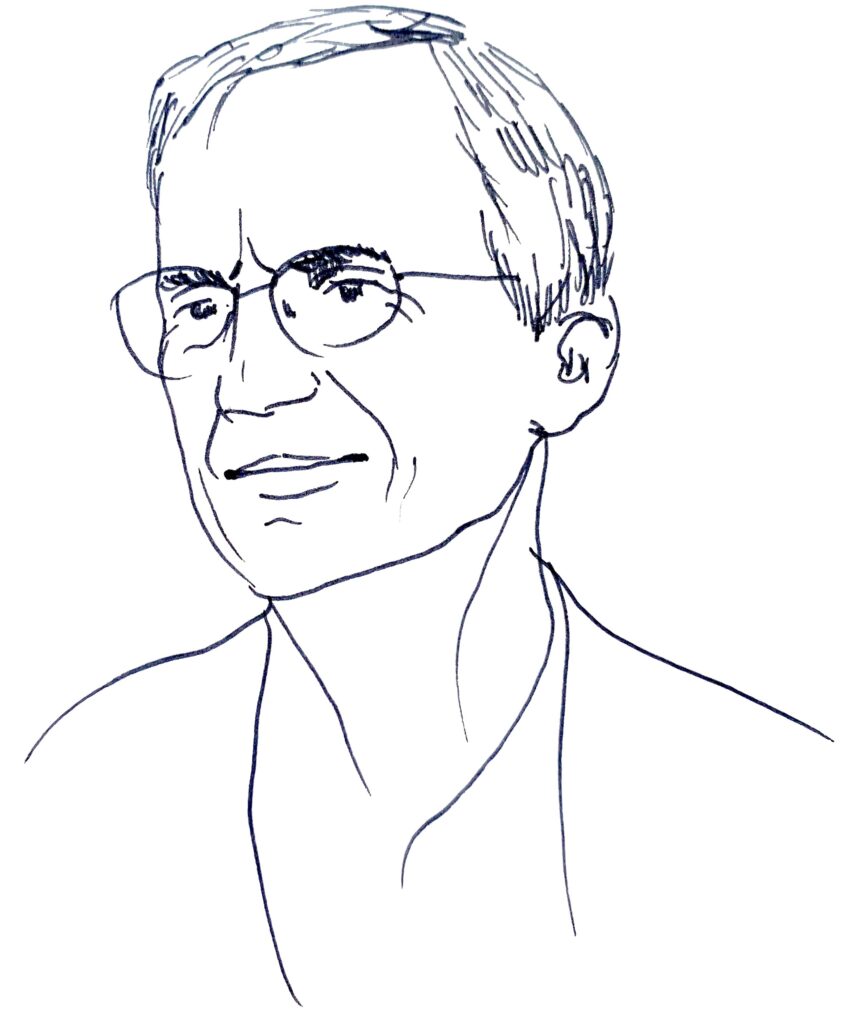The future of Anthroposophical medicines concerns everyone.
The most well-known Anthroposophical medicine is mistletoe. Research on mistletoe and the clinical use of mistletoe preparations have evolved in recent decades. Today, Anthroposophical mistletoe preparations have a ‹High School Diploma› in the form of a few successful scientific studies. It can be shown that mistletoe preparations injected directly into the tumor directly combat tumor diseases. They stimulate the self-regulation of the organism, reduce the side effects of conventional therapies, improve the quality of life, and have a positive influence on the lifetime of patients.
Mistletoe preparations are included in official guidelines, which are mainly used by the younger generation of doctors. Sweden is investing several million Euros to repeat a successful study from Serbia in pancreatic cancer patients. This study showed that patients live longer with mistletoe therapy and feel much better.1 Mistletoe therapy is attracting interest worldwide. In South Korea, clinicians use mistletoe preparations in addition to conventional medicine and traditional Asian medicine. There are also other medicinal plants, such as Bryophyllum – the ‹Goethe Plant› – on which studies are available. We now know how crucial it is to intercept a stress-related premature birth without side effects.2
Endangered Without Research
The example of mistletoe shows how complex it is today to convince broad medical circles of the effectiveness of a drug. Rudolf Steiner called for the ‹verification› of the effectiveness of Anthroposophical preparations.3 Unfortunately, for most Anthroposophical medicines, we only have a ‹simple school diploma›, the approval or registration, but no proof of efficacy in detail. For a long time, no money was invested here. However, only those who further develop their preparation can survive on the market, be it in the production method, in the proof of efficacy, or in the knowledge of its successful application. Such a development is necessary for these medicines to find new friends and new users. One component of this is the ‹Vademecum Anthroposophical Medicines›. Since 2005, it has been evaluating the experience of doctors working today and has been published in five languages.4
We have an enormous need for research on Anthroposophical drugs. Without such research, the existence of Anthroposophical drugs and their approval status are threatened. This research is very complex. And it faces the challenge that these drugs have other principles of action than fighting disease. They are medicines that:
• enhance life processes in the organism, such as Weleda’s hepatodorone in relation to the liver or the Lien comp. from Wala used for the spleen and immune system;
• can harmonize spiritual engagement in the physical body that is too strong, destructive, or insufficient, such as Bryophyllum for premature labor or copper preparations for asthma or colicky pain;
• strengthen the formation of heat: the presence of the spiritual person in the body – which applies to mistletoe as well as preparations with potentiated gold or iron. 5
In a word, these medicines strengthen self-regulation on a mental and spiritual level. There is a great need for this today. This is shown by the COVID disease, where it is therapeutically important to take the whole person into account and not just local findings. For example, an Anthroposophical doctor in Rio de Janeiro succeeded in treating 600 COVID patients without a single death because she consistently used Anthroposophical medicines. The Clinic in Arlesheim is an official care hospital in the canton and is now scientifically evaluating the data of 120 COVID patients assigned to it for inpatient treatment. Here, too, it is exciting to see to what extent a medicine based on holistic principles of action can show its effectiveness according to today’s scientific methods.

The Most Common Causes Of Death Today
Today, 71 percent of people in highly developed countries die from lifestyle-related diseases and profound disruption of self-regulation in the organism – especially cardiovascular diseases, chronic respiratory diseases, diabetes, and cancer. In addition, there are pain disorders, especially in the spine. In order to prevent such diseases, it is a matter of changing habits, stimulating non-drug therapies such as clarifying conversations and group training, with therapeutic eurythmy, meditation, and changes in diet and exercise. They also require regulatory drugs such as Anthroposophical drugs, which help invigorate the life forces lost in chronic disease. Thus, these preparations promote sleep duration and quality and the ability to concentrate and reduce susceptibility to cancer. Even in acute infections, such as bladder or sinus infections, conventional medicine is at its limit because its antibiotics threaten to become ineffective with inflated use. Anthroposophical medicines offer alternatives here.6 The same applies to pain killer residues poison animals and groundwater; the same applies to hormone preparations. The pharmaceutical industry contributes significantly to environmental poisoning with its chemically synthesized drugs. We have a 100-year war on disease behind us, but an insufficient build-up of sustainable health, as can be seen in schoolchildren whose mental health problems have doubled in Germany in the last ten years and continued to increase under COVID. At the same time, we have a century of pesticide-, insecticide-, and antibiotic-dependent factory farming behind us, with which we have created unspeakable animal suffering and pandemics, and many antibiotics are losing their effectiveness because the microorganisms in humans and animals are becoming resistant.
Understanding and Promoting Health
Health is a being’s ability to evolve, participate in the community, and direct themselves in their life.7 Looking at the central figure in the sculpture of the Representative of Humanity, we see an image of health, as well as disease in the figures of Lucifer and Ahriman. We understand that we are never simply healthy and never just sick, that ultimately health is something categorically different from the disease.
Health does not exist privately: the health of the other is linked to one’s own health, as we have learned in the pandemic. However, this applies to all living beings, humans, animals, plants, and soil organisms! Health is something personal. At the same time, it has a public and planetary dimension. ‹One Health› means asking what healthy development and self-regulation require. Promoting health requires something more and medicines that do more than just fighting or suppressing disease.
At the same time, ‹One Health› means giving priority to the use of medicines that are themselves in harmony with the cycles of nature, originate from them and return to them when they are eliminated or disposed of. It means consistently researching and optimizing the drugs that are important here from spiritually inspired research in which the School of Spiritual Science has its place. Today, the Anthroposophical Society should support our drug manufacturers and research institutes in these research efforts and work socially towards the promotion of such research. We need an awareness and self-confidence that we as an Anthroposophical movement have a mission in the field of medicine, which is linked to the mission of Biodynamic Agriculture and Waldorf Education:
• to promote life in its beauty, which is fed by the connection of earthly and cosmic forces;
• to promote the rhythmic interaction of spiritual and vital forces in humans as well as in the care of flora and fauna, also through medicines that are in harmony with the cycles of nature;
• to strengthen the spiritual presence of human beings in their biographical development, in the control of the soul, in their physical presence and heat regulation and initiative power, because today, this is the course set for sustainable health.
Sure, Weleda and Wala will cancel part of their product offerings in 2022. They are experiencing the most painful losses in countries like France and Italy. We are in a difficult situation where doctors and manufacturers are talking to each other about how to overcome this crisis. But we will overcome them in the long term if we, as a research-minded community, become aware of our mission and act accordingly: ‹One Health› means an epochal turning point in medicine, in agriculture, and for this change, it is important to stand up confidently in public and to support efforts in drug production and drug research in solidarity.
Shortened text of Georg Soldner’s speech at the annual meeting of the Anthroposophical Society in April 2022 on the occasion of the centenary of Anthroposophical pharmacy.
Image One Health; Photo: Mika Baumeister; Translation: Monika Werner
Footnotes
- W. Tröger et al. (2014), Quality of life of patients with advanced pancreatic cancer during treatment with mistletoe. Dtsch Arztebl Int. 2014 Jul 21; 111 (29–30): S. 493–502, 33 p. following 502. doi: 10.3238/arztebl.2014.0493.
- O. Potterat and A. P. Simões-Wüst (2020), Bryophyllum pinnatum. Phytotherapie.at, 14(4): S. 15–17.
- R. Steiner, Anthroposophical Knowledge of Human Nature and Medicine. GA Bd. 319, Rudolf-Steiner-Verlag, Basel 1994, p. 52 f.
- H. J. Hamre et al., Systematics of medical application experiences with drugs from holistic therapy systems: a descriptive analysis of the Vademecum Anthroposophical Drugs. Der Merkurstab 2021; 74(3): p. 261–272. Article-ID: DMS-21362-DE.
- See M. Girke, Internal Medicine. Berlin, 3. Edition., p. 127–136.
- See www.anthromedics.org/Praxis/Infektionskrankheiten.
- M. Huber, How should we define health? BMJ 2011;343:d4163.





